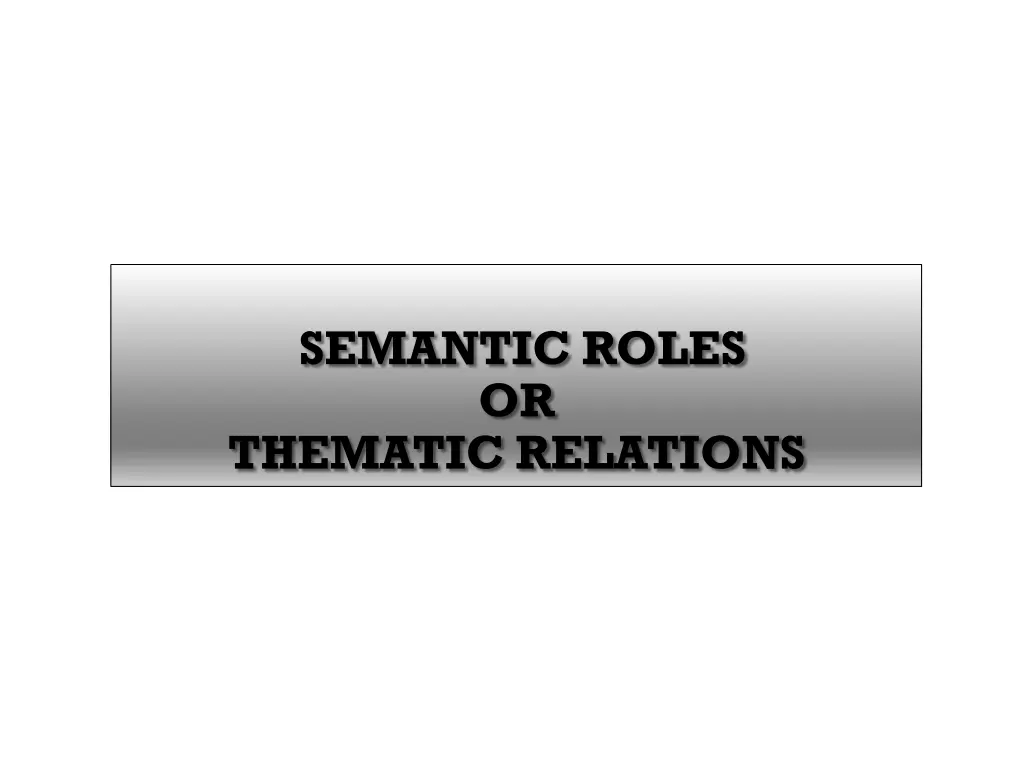
Understanding Semantic Roles and Thematic Relations in Linguistics
Explore the concept of semantic roles in linguistics, where verbs play a crucial role in determining the relationships between different entities in a sentence. Learn about agents, patients, recipients, and goals as key semantic roles, and how they contribute to the overall meaning of a sentence.
Download Presentation

Please find below an Image/Link to download the presentation.
The content on the website is provided AS IS for your information and personal use only. It may not be sold, licensed, or shared on other websites without obtaining consent from the author. If you encounter any issues during the download, it is possible that the publisher has removed the file from their server.
You are allowed to download the files provided on this website for personal or commercial use, subject to the condition that they are used lawfully. All files are the property of their respective owners.
The content on the website is provided AS IS for your information and personal use only. It may not be sold, licensed, or shared on other websites without obtaining consent from the author.
E N D
Presentation Transcript
SEMANTIC ROLES OR THEMATIC RELATIONS
SEMANTIC ROLES Verbs straddle the borderline between syntax and semantics; the structures surrounding them provide clues to their meanings. The nouns accompanying verbs display different semantic roles, or thematic relations, such as: agent, patient, recipient or goal. Semantic roles of a verb are essentially semantic, as the name clearly indicates, but these roles determine the syntactic structure of the sentence in which this verb is used.
SEMANTIC ROLES Instead of thinking of words as containers of meaning, we can look at the roles they fulfill within the situation described by a sentence. We can identify a small number of semantic roles for these noun phrases. These roles include: 1. Agent: It is the role is taken by the noun phrase to represent the entity that performs the action . 2. Theme (Patient): The noun phrase that represents the entity simply being affected by the action, or being described (i.e. not performing an action). The dog (agent) chewed a bone (patient).
SEMANTIC ROLES 3. A recipient is he noun phrase that represents the entity simply receiving something, as in: Paul sent a letter to Patsy (recipient). Patsy (recipient) received a letter from Paul. 4. A goal is the role that indicates where the entity moves to. He goes to the stadium every weekend. Although semantic roles are useful to understand how the structure of the sentence is linked to its meaning, but problems may arise sometimes, as exemplified by the sentence below: Veronica leapt into the water. (Is the water a goal or a recipient ?)






















